Penguins – Largest Group of Flightless Birds
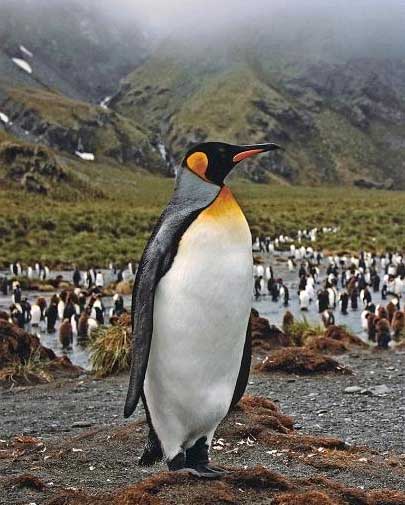
Living primarily in the southern hemisphere, penguins are a group of aquatic, flightless birds that have become highly adapted to life in the water. They are the largest order of entirely flightless birds – Sphenisciformes. There are between 17 and 20 different species of penguin, all featuring counter shaded dark and white plumage (they always seem to be dressed in regal attire), and all having wings that have evolved into flippers. The wings are unlike any other bird as they have become dense, solid and muscular for swimming instead of hollow and light for flight. Their webbed feet are set far back and make them balance with their tails and waddle awkwardly.
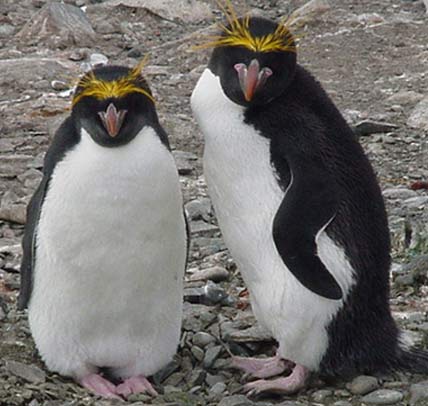
Macaroni
Contrary to popular belief, not all species of penguin live in Antarctica, or even in cold climates. They can be found in Argentina, Australia, Chile, New Zealand, The Galapagos Islands, New Zealand, and South Africa. North of Antarctica, on the archipelago known as Tierra del Fuego, there are many penguins, whose layers of feathers help them to survive the frigid sea waters in that area. Penguins are insulated from the frigid water by three layers: a layer of short, oil-tipped feathers, a layer of air, and an inner layer of fat. They may also huddle together to stay warm in the open or use shallow burrows in the ground.
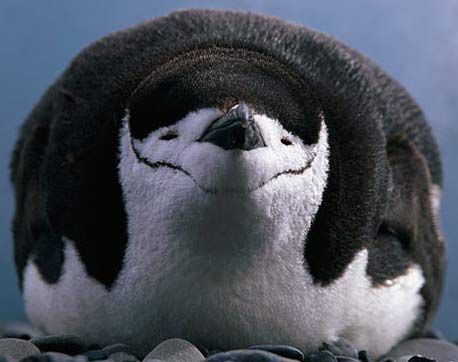
Chinstrap
Penguins feed primarily off of krill, fish, squid, and other creatures caught while diving in the ocean. They have three different swimming styles. First, when chilling on the surface they paddle lightly with their wings with their head and tail raised. Then, when they hunt, the have a power dive swim, with their wings flapping powerfully as if they are flying. Lastly, when they come to the surface of the water and leap out to breathe it’s called “porpoising”. The feet and tail are used for steering in the water. They can also drink salt water as they have a special salt water filter gland.
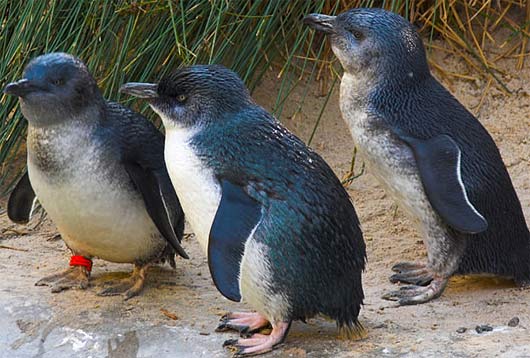
Little blue fairy penguins
Of all the species of penguin, the largest is the emperor penguin, which has an average size of 3 foot, 7 inches (1.1 meters) and a weight of 75 pounds (35 kilograms) but can be as large as 4 ft (1.2 m). The smallest species is the little blue penguin (or fairy penguin), which stands around 13 inches (33 centimeters) and weighs 3.2 pounds (1.5 kilogram). The northern-most species which lives along the equator, is the Galápagos penguin, and it is little less than 2 ft (60 cm) tall.

Galapagos
Usually, larger species of penguin will inhabit colder climates (their larger size and higher body fat makes them even more equipped for the climate), while smaller species can be found in temperate and tropical climates. Only two species live in Antarctica throughout the winter, the emperor and the Adelie. It has become widely believed that at some point in prehistoric times, there were species of penguin that were as large as full sized humans; these species were believed to live in the Antarctic regions.
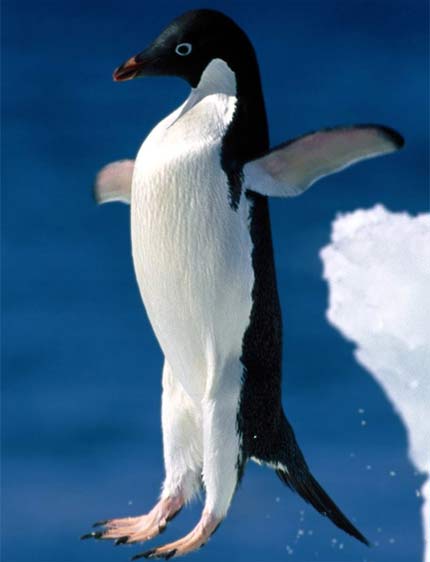
Adelie
In recent years, penguins have become known for their large breeding assemblies (colonies), in which males and females form pairs for the entire breeding season. The female lays the egg, then goes off to feed while the male lives of its fat for a while hunkering over the egg. The female eventually comes back after a few weeks or months and then they take turns guarding the egg.
